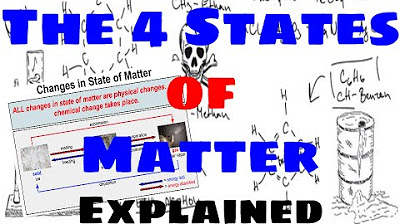How to Solve One-Step Inequalities | Math with Mr. J
Summary
TLDRIn this educational video, Mr. J teaches viewers how to solve one-step inequalities, emphasizing the importance of isolating the variable using inverse operations while maintaining balance on both sides of the inequality. He explains the difference between inequalities and equations, noting that inequalities have infinite solutions compared to the single solution of an equation. The video provides four examples, demonstrating the process of solving inequalities, including flipping the inequality sign when dividing or multiplying by a negative number. Mr. J also encourages testing solutions to ensure their validity, making this tutorial both informative and interactive.
Takeaways
- 📚 One-step inequalities are similar to one-step equations, requiring the isolation of the variable using inverse operations.
- ⚖️ The balance must be maintained; any operation performed on one side of the inequality must also be applied to the other side.
- 🔢 Inequalities can have an infinite number of solutions, unlike equations which have exactly one solution.
- 🔄 When multiplying or dividing both sides of an inequality by a negative number, the inequality symbol must be flipped.
- 👉 Example 1: Isolating 'y' in 'y + 7 < 8' involves subtracting 7 from both sides, resulting in 'y < 1'.
- 📉 Example 2: To isolate 'x' in 'x / 5 ≥ 3', multiply both sides by 5, leading to 'x ≥ 15'.
- 🔄 Example 3: For '14 ≥ n - 11', add 11 to both sides to isolate 'n', resulting in 'n ≤ 25'.
- 👆 Example 4: In '-6 * r < 36', divide both sides by -6 and flip the inequality to get 'r > -6'.
- 📌 Testing solutions involves substituting values to see if they satisfy the inequality.
- ❗ Remembering to flip the inequality sign when dividing by a negative number is crucial for obtaining correct solutions.
Q & A
What is the main topic of the video?
-The main topic of the video is solving one-step inequalities.
What is the fundamental approach to solving one-step inequalities?
-The fundamental approach is to isolate the variable by using the inverse or opposite operation, while keeping the equation balanced.
What is the key difference between inequalities and equations in terms of solutions?
-Inequalities have an infinite amount of solutions, whereas an equation has exactly one solution.
What is the rule regarding the inequality symbol when multiplying or dividing by a negative number?
-The inequality symbol must be flipped when multiplying or dividing both sides of an inequality by a negative number.
In the first example, what is the initial inequality and what is the solution?
-The initial inequality is y + 7 < 8, and the solution is y < 1.
How does the video demonstrate that zero is a solution to the first example?
-By substituting y with zero, the video shows that 0 + 7 is less than 8, confirming zero as a solution.
In the second example, what operation is used to isolate x?
-The operation used to isolate x is multiplying both sides by five.
What is the solution to the second example, and how does it include the number 15?
-The solution is x ≥ 15, which includes the number 15 because it is an 'or equal to' inequality.
In the third example, what is the initial inequality and how is n isolated?
-The initial inequality is 14 ≥ n - 11, and n is isolated by adding 11 to both sides.
What is the solution to the third example, and why is 20 a valid solution?
-The solution is n ≤ 25. The number 20 is a valid solution because 20 is less than 25, and when substituted for n, the inequality holds true.
In the fourth example, what is the initial operation involving r, and how is the inequality sign flipped?
-The initial operation is multiplying r by negative six. The inequality sign is flipped to 'greater than' when dividing both sides by negative six.
What is the solution to the fourth example, and how does negative 2 satisfy the inequality?
-The solution is r > -6. Negative 2 satisfies the inequality because when substituted for r, -6 times -2 results in a positive 12, which is less than 36.
Why is it important to flip the inequality sign when dividing by a negative number?
-Flipping the inequality sign is important to maintain the truth of the inequality, as not flipping it would lead to incorrect solutions.
Where can viewers find more information about why the inequality sign is flipped?
-Viewers can find more information and examples in other videos by the same creator, with links provided in the description.
Outlines

Dieser Bereich ist nur für Premium-Benutzer verfügbar. Bitte führen Sie ein Upgrade durch, um auf diesen Abschnitt zuzugreifen.
Upgrade durchführenMindmap

Dieser Bereich ist nur für Premium-Benutzer verfügbar. Bitte führen Sie ein Upgrade durch, um auf diesen Abschnitt zuzugreifen.
Upgrade durchführenKeywords

Dieser Bereich ist nur für Premium-Benutzer verfügbar. Bitte führen Sie ein Upgrade durch, um auf diesen Abschnitt zuzugreifen.
Upgrade durchführenHighlights

Dieser Bereich ist nur für Premium-Benutzer verfügbar. Bitte führen Sie ein Upgrade durch, um auf diesen Abschnitt zuzugreifen.
Upgrade durchführenTranscripts

Dieser Bereich ist nur für Premium-Benutzer verfügbar. Bitte führen Sie ein Upgrade durch, um auf diesen Abschnitt zuzugreifen.
Upgrade durchführenWeitere ähnliche Videos ansehen

The Four States of Matter - Explained

Lab Equipment - Explained

3. Gr 11 Life Sciences - Population Ecology - Theory 3 Mark Recapture Method

4. Gr 11 Life Sciences - Population Ecology - Worksheet 1

PENJASKES KELAS X - SOFTBALL

Introduction to Culture [AP Human Geography Review Unit 3 Topic 1]

Menentukan Mr ( massa molekul relatif )
5.0 / 5 (0 votes)
